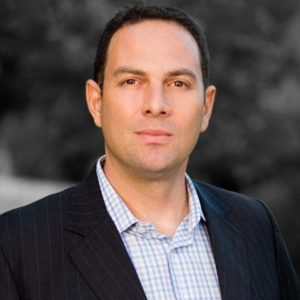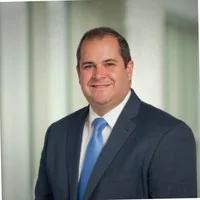Finding the Sweet Spot: Efficiency and Quality with Value-based Care | SurgiSnacks Episode 5
Listen On :
Join us in this episode as we dive into the fascinating realm of surgical scheduling and its synergy with value-based care. Our guest, Osmel “Ozzie” Delgado, COO of HOPCo, shares insights on achieving ‘the right surgery at the right time.’ Discover how value-based care principles enhance surgical scheduling, optimize patient outcomes, and improve healthcare efficiency. Learn about real-world success stories, strategies to overcome challenges, and the benefits for patients and healthcare systems. Tune in for a glimpse into the future of value-based care for surgical practices.
Related content:
What Do Patients Look For In A Surgeon?
Why Surgical Practices Are Merging
Losing the Paper Weight: Can Software Improve the Patient Experience?
Join us for SurgiSnacks, the podcast that delivers bite-sized insights into the world of surgical coordination. Hosted by Al & Justin of Surgimate, the surgical coordination software company, each episode features practical tips and best practices for streamlining your surgical practice, enhancing your profitability, and improving the patient experience. Subscribe on YouTube, Spotify, or Apple Podcasts.
Hello and welcome to another episode of SurgiSnacks.
My name is Al Norweb, and I
am the Chief Growth Officer of Surgimate.
And if you like to nerd out about the business
of surgery, you have definitely come to the right place.
SurgiSnacks:
our idea is to provide you with brief 10, 12
13 minutes sessions that you can hopefully listen to
in your car, in the shower, whatever you’re doing,
and get a few insights that will help you
with your running of your surgical practice.
My fearless co-host Justin Rockman is not here with us
today, but I am extremely excited to be joined by the
one and only Ozzie Delgado, the COO of HOPCo.
Ozzie, welcome to the show. How are you doing?
Great, Al.
Really excited to be a part of SurgiSnacks
and getting to enjoy our chat today on it.
Thank you. Likewise.
We’ve talked many times and it’s great to be able
to have you on the show for your unique perspective.
For those that don’t know you or HOPCo,
Ozzie, maybe we could start,
you can give us a quick
bio about yourself and your organization.
Sure.
So I am the Chief Operating Officer at
HOPCo, which stands for Healthcare Outcomes Performance Company.
HOPCo is a company that was founded 20 years ago
by David Jacofsky, who had a thesis on establishing the
model of care for musculoskeletal care way before its time,
when he had a thesis on driving this and delivering
healthcare or musculoskeletal care in a different format.
This thesis that he had, he brought it to
fruition and it started within Phoenix, Arizona, and I
think 20 years later, we’ve seen it expand across
multiple states throughout the entire country.
So really excited about that.
Well, that’s a fantastic story and I really think you
guys have been doing this so long now you’ve taken
your lumps and learned what works and doesn’t work.
So, as our guests may have ascertained, our topic for
today is sort of the intersection between value-based care
and the business of surgery and surgical care.
Ozzie, you may not know this, but we have
a little bit of a gimmick on this show.
We always introduce a snack that’s sort of
representative of our theme for the day.
So I’m excited to introduce our snack for the
day is dark chocolate, which is not too bitter,
not too sweet, just finding that sweet spot.
And we also picked Trader Joe’s
brand because we’re very value-centric.
But VBC, value-based care can mean a
lot of things to a lot of people.
How do you define it at HOPCo?
So, you know, Al, it really comes
down to seeing a patient who presents
themselves with some sort of musculoskeletal issue,
you know, knee pain, joint pain, a
fracture, if you will, and really understanding
how we take that patient, assess that patient,
and really driving towards delivering the
right care at the right location at the
right time and accomplishing the best possible outcome
we can for that patient.
And that’s really kind of in a nutshell as
saying there’s no long way of accomplishing this, but
how do we make this very efficient and accomplish
that outcome at the end of the day?
Okay.
And I imagine your payer model has to reflect that.
So how does that work for you,
at least in some of your markets?
Yeah, it’s a good follow-up.
So for us, obviously, how much is
that really working and putting into play?
So we take full global capitated risk
on musculoskeletal spend overall in these markets.
And basically, the best way to pressure test your model
is whether you are doing a good job of taking
costs out of the system and being fully at risk
to ensure you could deliver that care and accomplish those
outcomes you want to obtain in caring for the number
of lives you are responsible for.
Because that model that I mentioned, that is ultimately
the test of whether we have the ability to
drive that spend down, but not necessarily compromise in
any way, shape, or form the quality and the
outcome that the patients end up receiving.
Okay, so you teed right up into the first
question I really wanted to ask you about this.
I hear generally, not just in the musculoskeletal world, but in
all specialties, one of the concerns around value-based care
is that it can lead to the rationalization of care
in an effort to cut those costs.
So how is it that HOPCo as an organization
strikes the balance between wanting to execute appropriate surgeries,
but knowing that’s one of the most expensive parts
of the care delivery process itself?
Yeah.
So again, it starts with understanding a patient who
presents themselves with a problem, a situation, and an understanding
how do we get with that problem to as
quick of the determination of what the root cause
of that problem is that they’re having.
That in and of itself could undergo many machinations of
how you end up figuring out what they have.
But how do we really use predictive analytics, evidence
based care guidelines to drive towards coming to that
decision as quickly as we possibly can, which, by
the way you are eliminating waste when you do
that, which ultimately translates to reducing overall cost.
Once you’ve determined what the root cause is, then
really what becomes the most cost-effective way to
be able to drive the outcome you need.
And a great example of that al would be
somebody who ends up having an X-ray.
You could determine an algorithm.
You know they’re going to need surgery.
There’s no need to waste time or treatments or
alternative treatments to try to get to that end
result that we’re heading on that path anyway.
That’s how you drive effective value-based care.
Obviously, this involves patient
participation and patient engagement.
Some patients may fear the need or the want to
be able to go and proceed with surgery, as you
mentioned, the potential biggest costs overall in the care.
But if you eliminate that other excess waste overall and get
that to that outcome, if it is a surgical outcome, then
we could kind of cut some costs along the way.
Furthermore, we could get into the conversation of what’s
the right location and what’s the right therapy and
how do they receive that to be able to
drive towards their full recovery and back to normal,
healthy living lifestyle that they were.
I’m hearing what you’re saying.
I think the suggestion is that in some delivery models,
there might be a delay of certain surgical care in
an effort to explore other alternatives, maybe because that’s what
the patient wants, or maybe that’s because of the incentives
of the payer models that exist.
And one of the things you see is that jumping
some of that care and just getting straight to surgery
can actually be the right thing for the patient and
actually ends up saving costs for the overall system.
That’s correct, because when you look at the treatment,
it’s not about the episodic treatment of care.
It’s not about the cost of surgery, but it’s really
about the patient presented at this point with a problem.
What the surgical is just one
episode of that care continuum.
Even the post-surgical period, whether
it’s receiving therapy and recovering, it’s
an entire continuum of spend.
So where can we take the chunks out that are
unnecessary waste, if you will, and we end up cutting
our overall costs in that continuum of care.
This is putting you on the spot, but off the top
of your head, do you have a sense for kind of
the relative portion of the cost that you have in your system
related to surgical care versus non-surgical care?
Yeah, I don’t have that off the top of my head.
But I could tell you that when a patient
will not benefit from surgery because that’s maybe more
on the minority on the musculoskeletal side, but when
they will not benefit from surgery.
The options are still provided for the patient to be able
to feel better and kind of come away with at least
some solution that makes the most sense for them. Right.
Because again, we’re dealing with the humanistic component of
a patient who presents with a problem, a chief
complaint, and our ability is to be able to
kind of figure out what’s going to be the
best outcome for them overall.
And that might be something
related to non-musculoskeletal related.
It might be something neuropathic-related that requires
some neuromodulation or something to that effect.
So really kind of trying to understand and
uncover what that is, helps drive that outcome
we can for that patient, as long as
we’re able to rule out quickly and efficiently
that it’s not going to be solved through
some musculoskeletal intervention for that patient overall.
Okay.
For the benefit of the audience and certainly for
me, can you give me an example, like a
concrete example of a patient who presents where you
find that there’s a certain way that you guys
can optimize that care to deliver a better outcome
to them and lower costs, a specific procedure type?
Yeah, I think I’ll talk at a grander level and
certainly push on me and I could get into more
details, but I think we’re seeing a lot of care
in the United States shifting from the inpatient traditional type
of treatment model to more of an outpatient treatment model.
You’re seeing joint cases, joint outpatient joints being more and
more know where in the past it’s been only an
inpatient hospital type of surgery, if you will.
If you look at the CMS list of
inpatient-only surgical cases, that number has severely
been reduced over the last ten years overall.
So you’ve seen that number of cases go down.
So I think it’s really an example would be
understanding here are patients that were receiving care, surgical
interventions now are being done with same-day surgery.
Go home and spend the evening in the comfort
of your home and having zero impact on the
outcome of how they end up fully recovering overall.
So I think seeing that and that’s just one
small example of what’s out there right now.
Yeah, the push to ASC is enormous,
right, and I almost describe it as violent.
I’ve seen some charts where you see like,
in the last ten years, it’s a positive
violent, let’s just say, but even cardiovascular and
other conditions that you thought could only happen
in the hospital, that’s all going because of
technology enablement and the data that’s showing that
these things can be performed in those environments.
Another interesting angle to this, I was just speaking
with a practice recently that they had a very
long-standing relationship with their local hospital and things
kind of changed and the hospital began to kind
of undercut them and they didn’t have their own
independent ASC, which is now something we’re commonly seeing
with surgical practices.
And it know, obviously put them
in a lurch from an organizational standpoint.
But the thing that really struck me about
it, which ties back to, I think, our
discussion overall is they were very frustrated as
consumers in the local market, that they were
losing access to this sort of specialty care
outside of that hospital network, that they were
literally seeing the outcomes and knowing how the
hospital took care of some of the patients
in that market that their kids, their wives,
their friends and family would actually be getting
a lowering quality of care, which I think
that’s part of where you guys are at
as an organization is the ability to be
truly specialized in the delivery of this care
so you do it better and cheaper than what
the larger institutions might be able to do.
Yeah, I think that’s spot on when you
think of high-quality care outcomes and no
matter what specialty you’re talking about, it’s about
ensuring that you’re doing it highly repeatable functions
and highly reliable functions.
And you might lose a sense of that when
doing it in a multispecialty kind of conglomerate of
we do everything and we’re everything to everyone versus
really going to focus in this kind of wing
of specialty care, but everybody’s going to be completely
aligned and trained and competencies achieved,
and accomplished, where everybody knows this is what we
do and what we do every single day.
It’s highly repeatable and we expect
to highly reliably attain those outcomes.
Okay, well that definitely makes a lot of sense.
And I have a pure business background, really,
and not a clinical background, and minimizing variations
and doing things in a consistent way is
absolutely a principle of good operations.
So it makes a lot of sense.
So, Ozzie, we are up against our time
because we always promise our audience that we
will keep it short and sweet.
But this has been a great primer about
the organization, about HOPCo, about value-based care.
And what I want to turn to as we go
to our next session is how do you work with
your doctors on this and get your perspective on that
because I’m sure that would be very interesting to many
of the folks that might listen.
So let’s pause there.
But for those who are listening, we will be
introducing a second session of this down the road.
So be on the lookout.
Thank you for tuning in.
As always, we look forward to your feedback and
thoughts on the show, so be sure to leave
us notes and we will see you again soon.
Thanks so much, Ozzie, really appreciate your time.
Thank you Al. Thanks for having me.
Related Episodes
Episode 4: When Patient Reviews Sting - Part II
MEET THE HOSTS

Justin Rockman
VP of Business Development
The industry expert on surgical scheduling workflow optimization, Justin consults for surgical practices and lectures nationwide. Justin joined Surgimate after 8 years as a founding member of an IBM-acquired startup. A devoted husband and father of four, ultra-marathoner and lover of the outdoors, Justin studied law at Monash University and earned his MBA from Bar Ilan University.

Al Norweb
Chief Growth Officer
Al Norweb is focused on everything and anything that brings the power of Surgimate to more surgical practices. Al mostly recently served as the General Manager of Orthopedics for a leading EHR and practice management software company where he oversaw a near quadrupling of their book of business. Based in Miami, FL, Al holds an MBA from Harvard Business School, an MPA from Harvard Kennedy School, and a BS in Economics from Duke University.
be our guest?
Would you like to be part of our next podcast episode? If so please contact us for more details.










Ozzie Delgado is the COO at HOPCo, a visionary leader in the healthcare industry, with extensive experience in healthcare management and strategic leadership, holding an MBA in Healthcare Administration.
Osmel “Ozzie” Delgado Chief Operating Officer at Healthcare Outcomes Performance Co. (HOPCo)